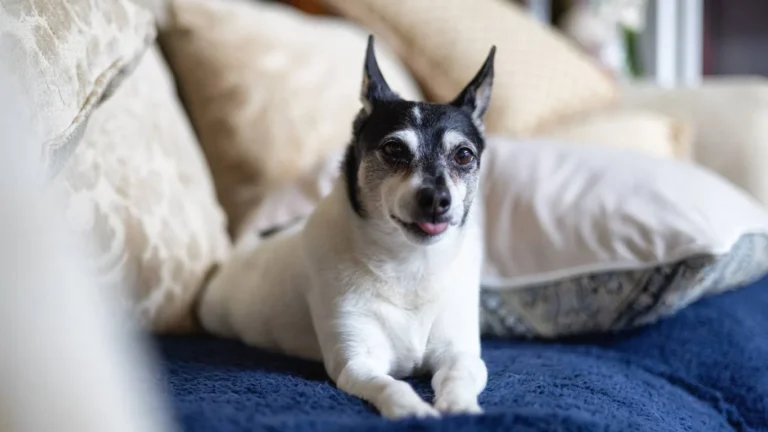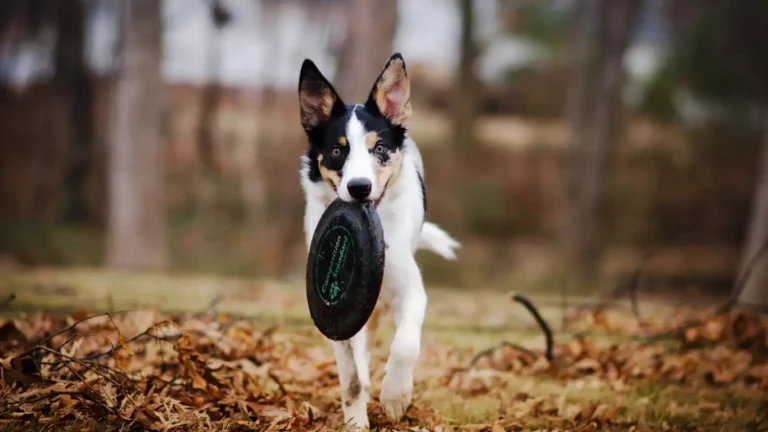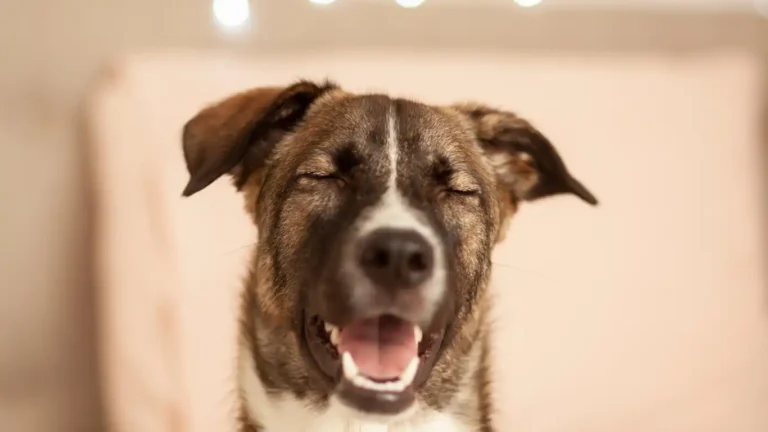How to Help a Dog Overcome Separation Anxiety: Effective Solutions for Stress-Free Dogs
If you’re a dog owner, you know how challenging it can be to deal with separation anxiety in your dog. It’s tough seeing your furry friend in distress when you leave the house, and you just wish you could make them feel better. As a veterinary technician with a specialty in nutrition, I’ve worked with many dogs struggling with separation anxiety, and I’ve seen firsthand how overwhelming it can be for both the dog and the owner. But here’s the good news: there are effective ways to help your dog overcome this issue, and it starts with understanding what causes separation anxiety and how you can help manage it. In this article, we’re diving into the most common causes of separation anxiety in dogs, as well as practical, science-backed strategies you can implement to help your pup feel more secure when you’re not around. Whether you’ve just started noticing signs of anxiety or have been dealing with it for a while, this guide is packed with tips to ease the stress for both of you.
Understanding Separation Anxiety in Dogs

Separation anxiety occurs when a dog feels extreme distress when they are separated from their owner or primary caregiver. This isn’t just your dog being a little needy or clingy—it’s a true emotional response that can cause a variety of behavioral issues. As a veterinary technician, I’ve seen everything from dogs barking incessantly to destructive behaviors like chewing on furniture or even injuring themselves in an attempt to escape. While it can be distressing to watch, the good news is that with time, patience, and the right approach, dogs can recover from separation anxiety.
The most important thing to understand is that separation anxiety doesn’t happen because your dog is trying to manipulate you or is simply being “bad.” It’s a response to a perceived threat—namely, being left alone. Dogs are pack animals, and they naturally want to be with their “pack” at all times. When left alone, especially for extended periods, they can become overwhelmed and anxious.
What Causes Separation Anxiety in Dogs?
- Changes in routine or environment: Dogs are creatures of habit, and even small changes in their routine, such as a new work schedule or a recent move, can trigger anxiety. Dogs that were once okay being alone for a few hours might suddenly start showing signs of distress.
- Trauma or past negative experiences: Dogs that have been abandoned, rehomed, or experienced trauma in the past may have a heightened fear of being alone. These experiences can cause them to associate separation with negative feelings.
- Genetics and breed predispositions: Some breeds are more prone to separation anxiety than others. Breeds like Border Collies, Labrador Retrievers, and German Shepherds are often more sensitive to being left alone, while others may be less affected.
- Lack of proper socialization: Dogs that haven’t had enough positive experiences being alone or with other people may develop anxiety when left on their own. Early training and socialization can help prevent this.
Understanding the root cause of your dog’s anxiety is crucial because it allows you to address the issue from the right angle. If you’re unsure about the underlying cause, a veterinarian or a pet behaviorist can help pinpoint the source and guide you in the right direction.
How to Help a Dog Overcome Separation Anxiety: Step-by-Step Approach
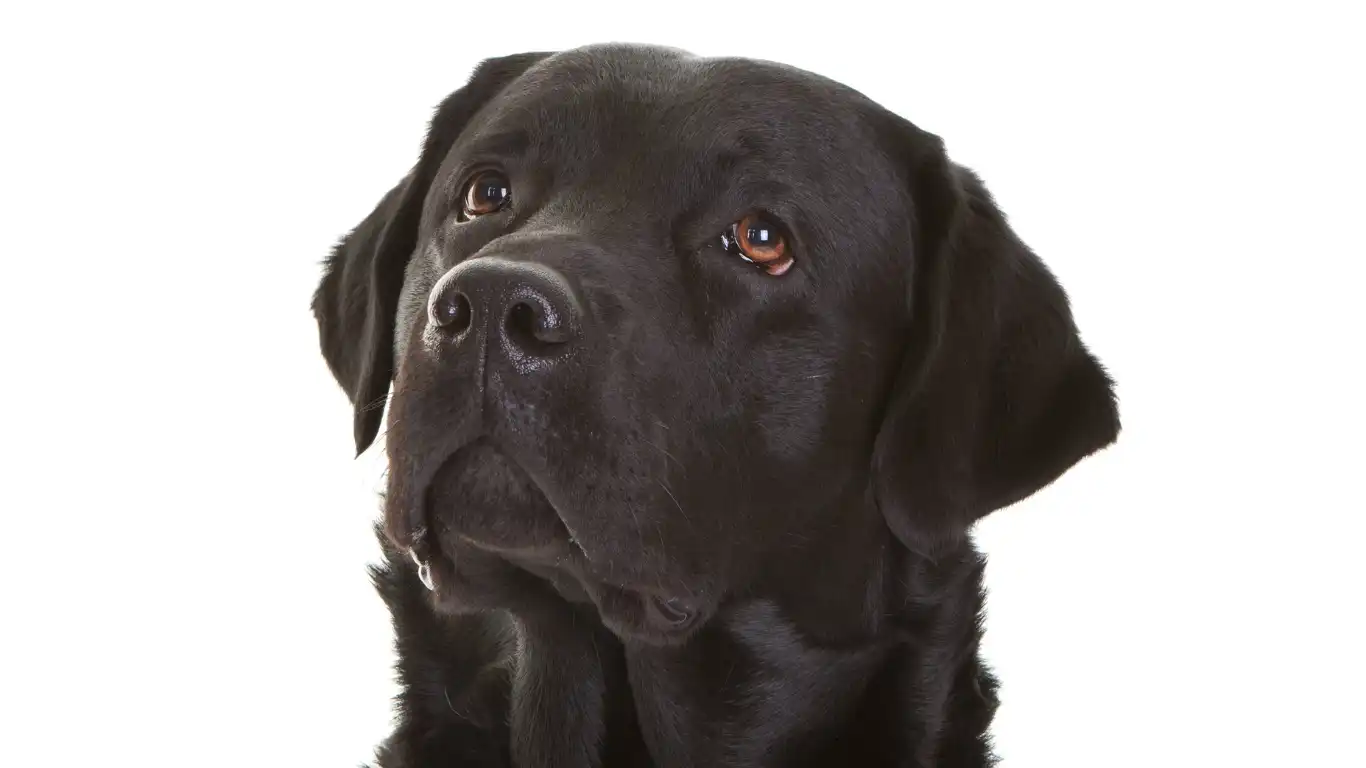
Now that we’ve covered the basics of separation anxiety in dogs, let’s dive into some tried-and-true strategies to help your dog feel more at ease when you’re not around. It’s important to remember that overcoming separation anxiety takes time, so be patient with your dog as they work through their fears.
1. Create a Safe, Secure Space for Your Dog
One of the first things you can do is create a designated area in your home where your dog feels safe and comfortable. This could be a crate, a specific room, or a cozy corner where they have their bed, some toys, and water. The key is to make this area feel like a calm and relaxing space, rather than a place of confinement.
Many dogs with separation anxiety feel more secure in a smaller, enclosed space. Crate training, when done correctly, can help your dog view the crate as a safe retreat rather than a place of punishment. Ensure that the crate is large enough for your dog to move around comfortably, but not so large that they feel insecure. Place some of their favorite toys or a blanket with your scent inside to help them associate the space with positive experiences.
2. Gradual Desensitization to Your Departure
One of the most effective ways to help your dog overcome separation anxiety is through gradual desensitization. This technique involves slowly getting your dog used to being alone by gradually increasing the amount of time you’re away. The goal is to start with short absences and build up to longer periods of separation.
Start by leaving your dog alone for just a few minutes, then gradually increase the duration of your absences over time. The key is to keep the departures low-stress and positive. You can do this by offering treats, toys, or even puzzle feeders to keep them occupied while you’re gone.
3. Offer Distractions and Comfort Items
Another strategy to reduce anxiety is to provide your dog with distractions while you’re away. Interactive toys, treat-dispensing puzzles, and even calming music can help keep your dog engaged and relaxed. Some dogs benefit from special items that remind them of you, such as a piece of clothing with your scent on it. These can provide comfort and reassurance while you’re not around.
There are also products like calming pheromone diffusers and anxiety wraps that can help soothe your dog during stressful moments. These items mimic natural pheromones that dogs produce when they feel calm, and they can be particularly effective in helping your dog relax when you leave.
4. Avoid Making a Big Deal of Departures and Arrivals
Many owners unknowingly reinforce their dog’s anxiety by making a big fuss when they leave or return home. This includes giving excessive attention, affection, or reassurance before you leave or when you return. While you might think this helps your dog feel better, it can actually heighten their anxiety because it signals that departures and arrivals are big, stressful events.
Instead, try to keep your comings and goings low-key. Avoid saying goodbye in an overly dramatic way, and don’t make a big deal of your return. This can help normalize the process for your dog, so it doesn’t feel like such a traumatic event each time you leave.
How to Recognize the Signs of Separation Anxiety in Your Dog
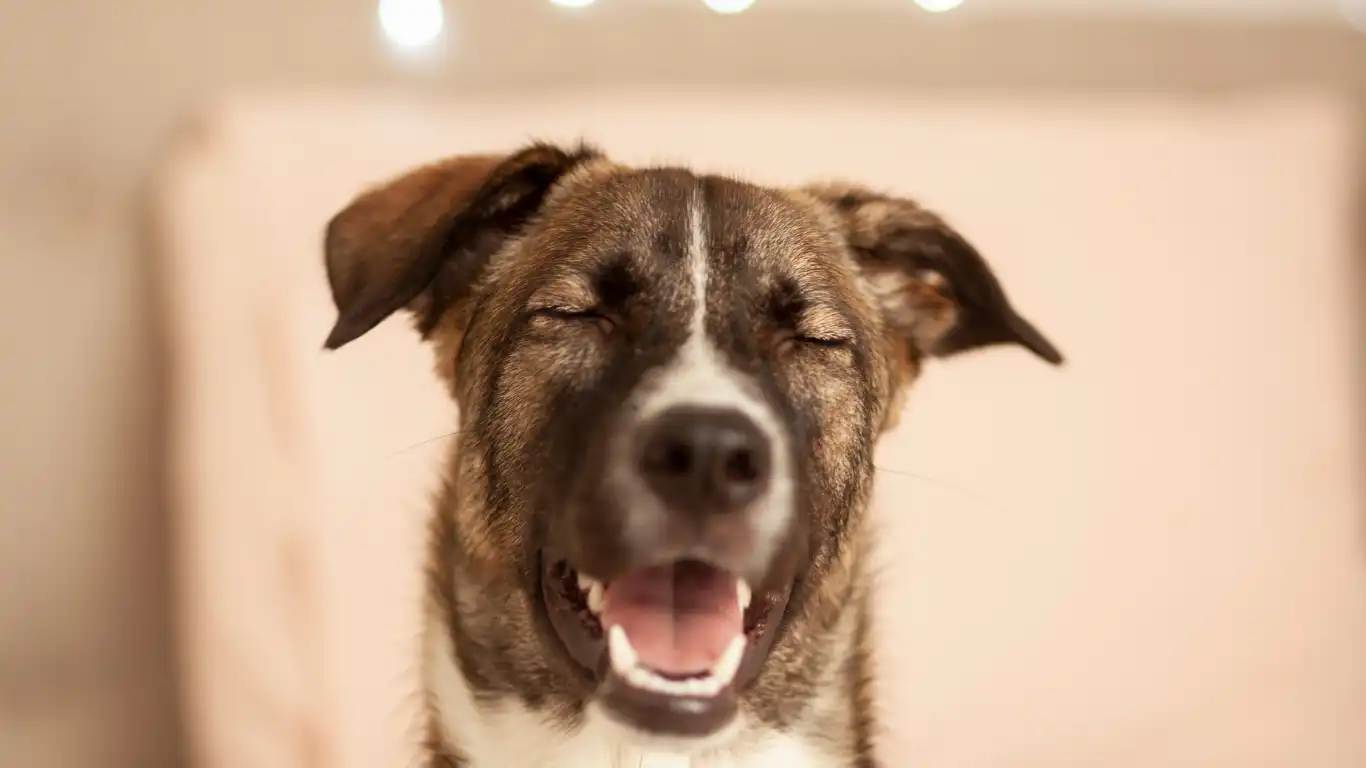
Before we wrap up, let’s talk about how to recognize the signs of separation anxiety in your dog. Every dog is different, so the symptoms might vary, but common signs of separation anxiety include:
- Barking, whining, or howling: If your dog is vocal when you leave, this could be a sign that they’re distressed.
- Destructive behavior: Chewing furniture, scratching doors, or trying to escape from crates can be signs of anxiety.
- Urinating or defecating indoors: Dogs with separation anxiety may lose control of their bladder or bowels due to stress.
- Excessive drooling or panting: Some dogs show physical signs of anxiety, such as drooling or panting excessively when they’re left alone.
- Attempts to escape: Dogs may try to dig, claw, or chew through doors or windows in an effort to reunite with their owner.
If you notice any of these signs, it’s important to start addressing the issue as soon as possible. The longer separation anxiety goes unaddressed, the more difficult it can become to manage. But with the right approach, you can help your dog feel more comfortable and secure, even when you’re not around.
Medication and Professional Support for Separation Anxiety

While many of the strategies I’ve discussed so far can help alleviate separation anxiety, there are times when a more comprehensive approach is needed. In cases where your dog’s anxiety is severe, professional support may be necessary, and in some cases, medication can play a crucial role in managing their distress. This was the case for one of my own patients—a lovely Labrador mix named Daisy. Daisy’s separation anxiety was so severe that she would chew through crates and even injure herself trying to escape. After trying various behavioral modifications, we eventually had to involve a veterinarian and started her on medication to help calm her nervous system. While medication isn’t always the first option, it can make a world of difference when combined with behavioral therapy.
There are several medications available that can help dogs with separation anxiety. These medications work by altering the brain chemicals that control mood and anxiety, such as serotonin and norepinephrine. It’s important to note that medications are not a cure but a tool to help manage symptoms. They’re often most effective when used alongside behavior modification techniques like those I mentioned earlier. Your veterinarian will be able to determine whether medication is appropriate for your dog based on their specific needs and condition.
When to Consult a Professional Behaviorist
Sometimes, despite all your best efforts, you might find that your dog’s anxiety is not improving. This is where a certified dog behaviorist can step in. These professionals specialize in understanding animal behavior and can help you create a personalized treatment plan for your dog. For example, if you’ve tried desensitization and other techniques but are still seeing signs of anxiety, a behaviorist might suggest different methods or a more gradual approach that could be more effective for your dog’s specific temperament.
As a veterinary technician, I’ve worked closely with many behaviorists, and I’ve seen the incredible transformations they can help create. They can offer tailored advice, work directly with your dog, and guide you in the right direction for treatment. Some behaviorists even offer remote consultations if you’re unable to find one nearby. Investing in professional help can really make a difference, especially when you’re feeling stuck or overwhelmed.
Alternative Therapies and Natural Remedies for Separation Anxiety

In addition to the more traditional methods of treatment, there are several alternative therapies and natural remedies that can help soothe your dog’s anxiety. These options are often used as complementary treatments alongside behavior modification and medication, and many pet owners find them helpful in managing their dog’s stress. Let me tell you, I’ve had plenty of success with some of these natural methods, especially with dogs that are more sensitive to medications or just need an extra layer of calm.
Calming Pheromone Products
One of the most popular natural remedies I recommend is the use of calming pheromone products. These products mimic the natural calming pheromones that mother dogs produce to comfort their puppies. When dispersed into the air, these synthetic pheromones can help create a sense of security and calmness for your dog. You can find these pheromones in sprays, diffusers, or collars.
For example, Adaptil is a brand that creates a synthetic dog-appeasing pheromone, and I’ve seen firsthand how much it helps anxious dogs. It’s particularly effective when used in the area where your dog spends the most time when you’re away, such as their crate or the living room. It’s a gentle, non-invasive method that can complement other treatments and is definitely worth trying.
Calming Music and White Noise
Another surprisingly effective method is playing calming music or white noise while you’re away. There are even special playlists and audio tracks designed specifically for dogs, which contain soothing sounds that can help mask unsettling noises and promote relaxation. These soundtracks usually include classical music or nature sounds that have been found to lower stress in dogs.
For dogs that are easily startled or agitated by outside noises, white noise machines can help drown out any environmental sounds that might trigger anxiety. I’ve had clients who’ve used white noise successfully, and it’s particularly helpful for dogs who get worked up by the sound of traffic, other dogs barking, or even thunderstorms.
Thundershirts and Anxiety Wraps
Many dogs find comfort in a snug, secure feeling, which is why anxiety wraps like Thundershirts can be so effective. These garments apply gentle pressure to your dog’s torso, which is believed to have a calming effect. It’s similar to the feeling of being swaddled as a baby, which can provide comfort and reduce anxiety.
I’ve seen Thundershirts work wonders for dogs with mild to moderate separation anxiety. If your dog is a little more sensitive to touch or prefers to be left alone during stressful times, you might need to slowly introduce them to the idea of wearing one. Some dogs take to it right away, while others need a little time to get used to the sensation. But in many cases, the anxiety-reducing effect is immediate and highly effective.
Herbal Remedies and Supplements
If you’re looking for something completely natural, there are several herbal remedies and supplements designed to calm anxious dogs. For example, ingredients like valerian root, chamomile, and lavender have calming properties that can help ease your dog’s anxiety. You’ll often find these herbs in calming chews or supplements, which can be given to your dog to help relax them during stressful times.
In my experience, these supplements are particularly helpful when combined with other methods like crate training or desensitization. They’re not a miracle cure, but they can definitely be a valuable part of your dog’s overall treatment plan. As always, be sure to consult with your veterinarian before introducing any new supplements or herbs into your dog’s routine to ensure they’re safe and appropriate for your dog’s specific health needs.
Exercise and Mental Stimulation for Reducing Anxiety

One of the best ways to manage your dog’s anxiety is by providing regular physical and mental exercise. When your dog is mentally and physically tired, they’re less likely to engage in anxious behaviors. This means ensuring your dog gets enough playtime, walks, and mental challenges, especially before you leave the house.
Exercise is essential for all dogs, but it’s especially important for dogs with separation anxiety. A good walk or play session can help burn off excess energy, and a mentally stimulating activity like puzzle toys or treat-dispensing games can provide a positive distraction when you’re not home. It’s also important to note that exercise helps release endorphins, which can improve mood and reduce anxiety.
Remember, every dog is different, so it may take some trial and error to find what works best for your pup. However, incorporating daily exercise and mental stimulation into your dog’s routine is one of the most natural ways to keep their anxiety in check. And let’s be real—it’s a great way to bond with your dog and tire them out so you can get some much-needed peace and quiet while you’re at work!
Long-Term Strategies for Managing Separation Anxiety

As we wrap up our discussion on how to help your dog overcome separation anxiety, I want to emphasize that managing this condition is not a one-time fix, but rather a long-term commitment. In my experience as a veterinary technician, it’s essential to have a sustainable, ongoing approach to managing your dog’s anxiety. While some techniques, like desensitization or medication, can offer immediate relief, the key to success lies in consistency and patience. This isn’t something that can be “cured” overnight, but with time and effort, you can significantly improve your dog’s quality of life—and yours as well. I’ve worked with numerous dog owners who, over several months, were able to see major improvements in their dog’s separation anxiety by sticking to a well-rounded plan. Let’s dive into a few long-term strategies that can make all the difference.
Consistency is Key: Stick to a Routine
One of the most effective long-term strategies for managing separation anxiety is maintaining a consistent routine. Dogs thrive on predictability, and knowing when they can expect walks, meals, and playtime can help them feel more secure. When you keep a consistent schedule, you reduce the chances of triggering anxiety due to uncertainty.
It’s also important to stick to a regular routine with departures and arrivals. If you’re the type to make a big show of saying goodbye or coming home, your dog will likely start to associate these moments with anxiety. By staying calm and consistent, you can help your dog see that these transitions don’t need to be stressful. For example, try giving your dog a treat or engaging toy right before you leave to distract them, and keep comings and goings low-key.
Continue Positive Reinforcement Training
Positive reinforcement is another key long-term strategy in addressing separation anxiety. Rewarding calm behavior and reinforcing good habits can help your dog understand what you expect from them. For instance, when you practice short absences, reward your dog with a treat or praise when they remain calm. Over time, your dog will start to associate your departures with something positive.
When working with dogs that have separation anxiety, I often recommend incorporating positive reinforcement into daily life. Even outside of training sessions, be sure to reward your dog when they display calm behavior. For example, if they quietly rest in their designated safe space while you get ready to leave, reward them. This reinforces that calm behavior leads to rewards and can help reduce anxiety over time.
Maintain Socialization and Regular Engagement
Another critical aspect of managing separation anxiety is ensuring that your dog remains socially and mentally engaged. This is especially important if your dog has a tendency to become overly reliant on you as their primary source of comfort. I’ve worked with clients who, over time, have gradually introduced their dogs to new experiences, people, and environments to build confidence and reduce their anxiety.
Doggy playdates, trips to dog parks, and training classes can help your dog learn that it’s okay to be around others besides you. Even exposing them to different environments and scents can work wonders in reducing their dependence on you. The goal is to build your dog’s confidence and teach them that the world is a safe place, even when you’re not around. It’s also important to make sure that your dog gets the right amount of social interaction and mental stimulation, even if you’re not there.
When to Seek Help from Your Veterinarian
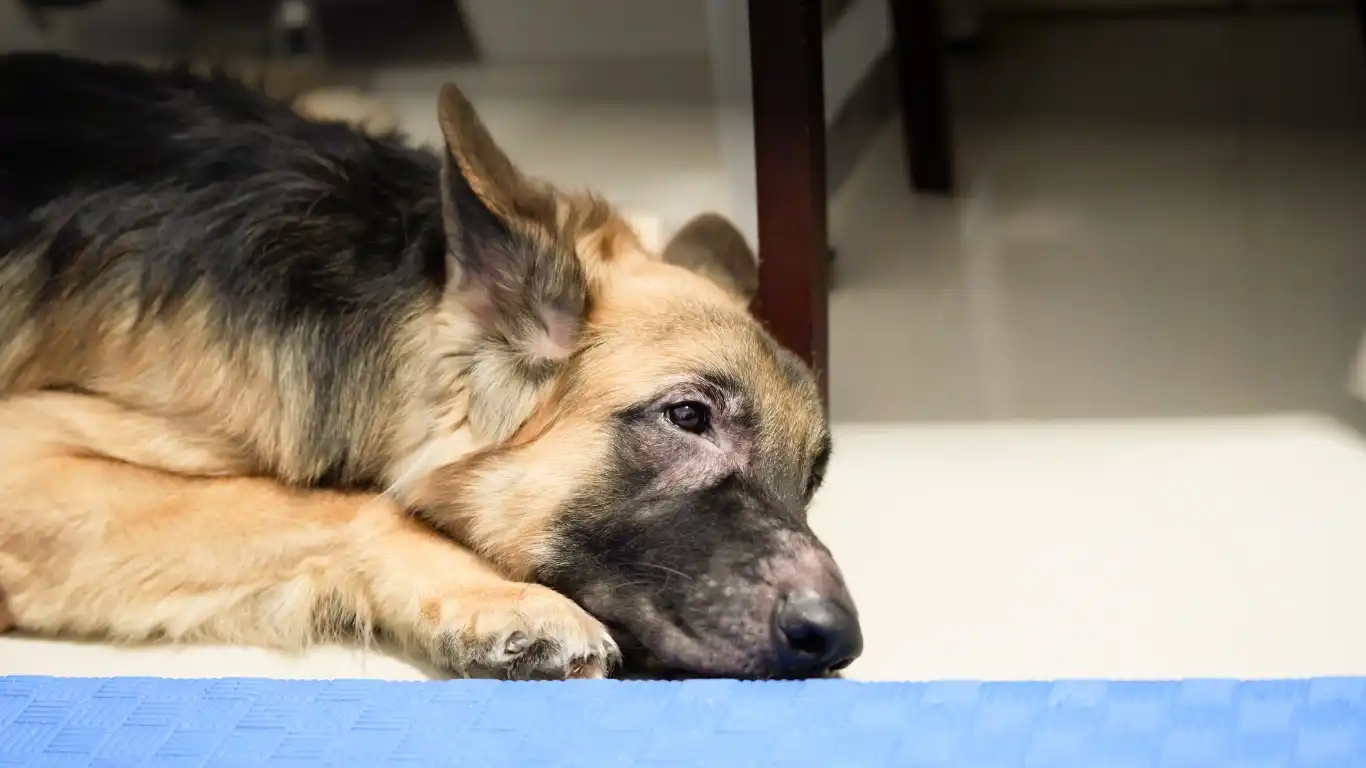
While many cases of separation anxiety can be managed effectively with behavioral modifications, there are times when you should reach out to your veterinarian for additional support. As a veterinary technician, I can’t stress enough the importance of seeking professional advice when needed. Separation anxiety can sometimes be intertwined with other underlying health or behavioral issues, and your veterinarian can help assess the situation from a broader perspective.
Signs Your Dog Needs Professional Help
- Severe Destructive Behavior: If your dog is regularly causing injury to themselves or significant damage to your home, it may be time to get professional help.
- Inability to Cope with Routine Modifications: If your dog is unable to tolerate even short separations despite consistent training, it may indicate that the anxiety is more severe or has become ingrained.
- Physical Symptoms: Excessive drooling, vomiting, or other physical signs of distress are red flags that need to be addressed with your veterinarian.
- Behavioral Escalation: If your dog’s anxiety gets worse over time despite your efforts, it’s a good idea to seek additional support from a professional behaviorist or veterinary behaviorist.
In these cases, your veterinarian may recommend a thorough examination, possible medication, or a referral to a behaviorist who specializes in separation anxiety. Don’t be afraid to ask for help—your dog’s well-being is worth it!
Resources and Further Reading
There are a number of excellent resources that can provide additional guidance on managing separation anxiety. Here are some websites I recommend for dog owners looking for more information on this topic:
- PetMD: Offers a variety of articles on dog behavior, health, and training techniques, including separation anxiety.
- American Kennel Club (AKC): Provides detailed advice on various aspects of dog care, including behavior issues like separation anxiety.
- National Institutes of Health (NIH): For broader research on animal health and behavior, including studies on anxiety disorders.
Disclaimer
It’s important to note that the information shared in this article is based on my experience as a veterinary technician and my knowledge of dog behavior. Every dog is different, and what works for one may not work for another. It’s always a good idea to consult with your veterinarian before starting any new treatment plan for separation anxiety, particularly when introducing medication, supplements, or alternative therapies. This article is intended to offer general advice and should not replace professional medical or behavioral advice. If your dog’s symptoms worsen or if you’re unsure about the best approach for your specific situation, seeking professional help is crucial for their well-being.


